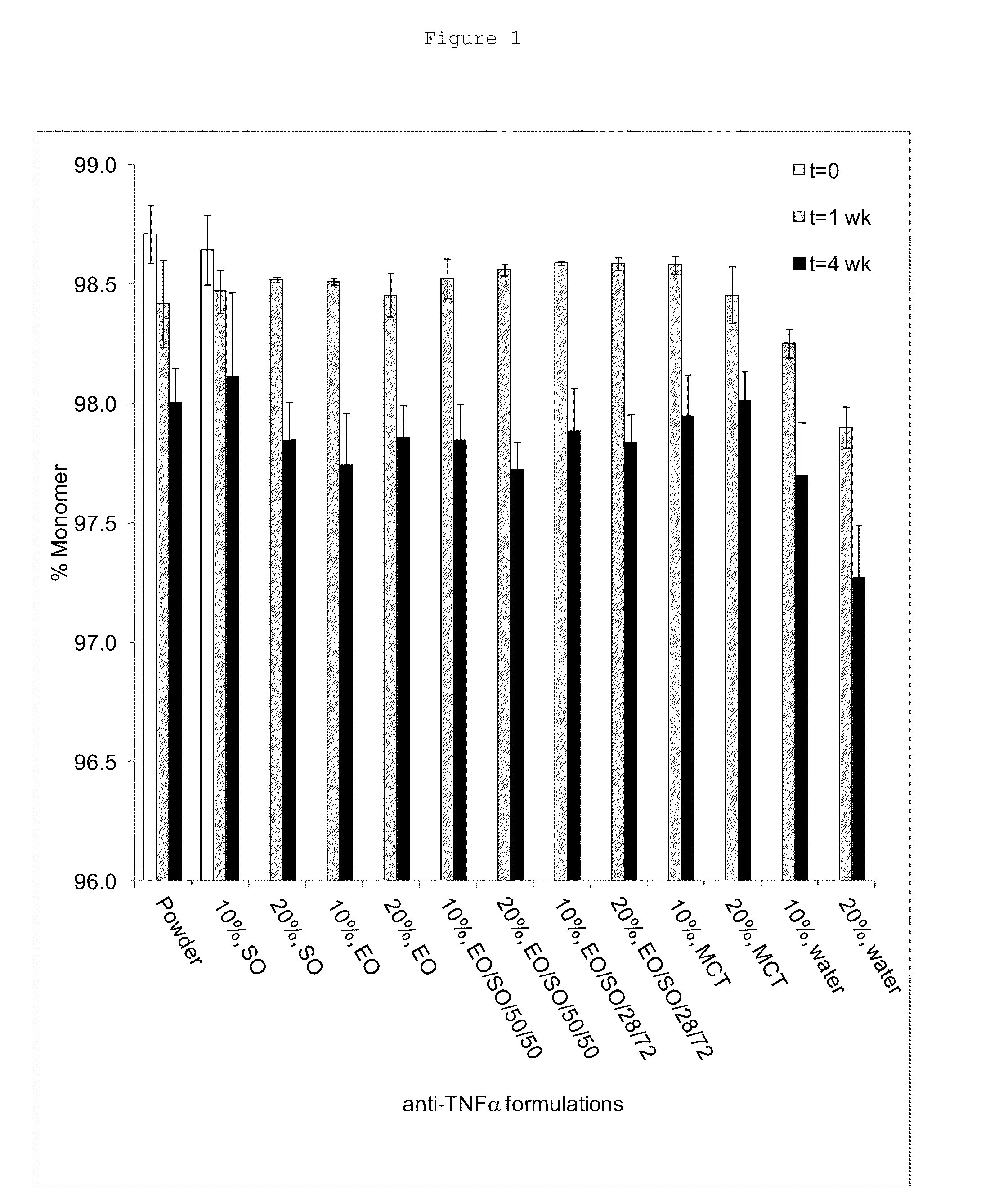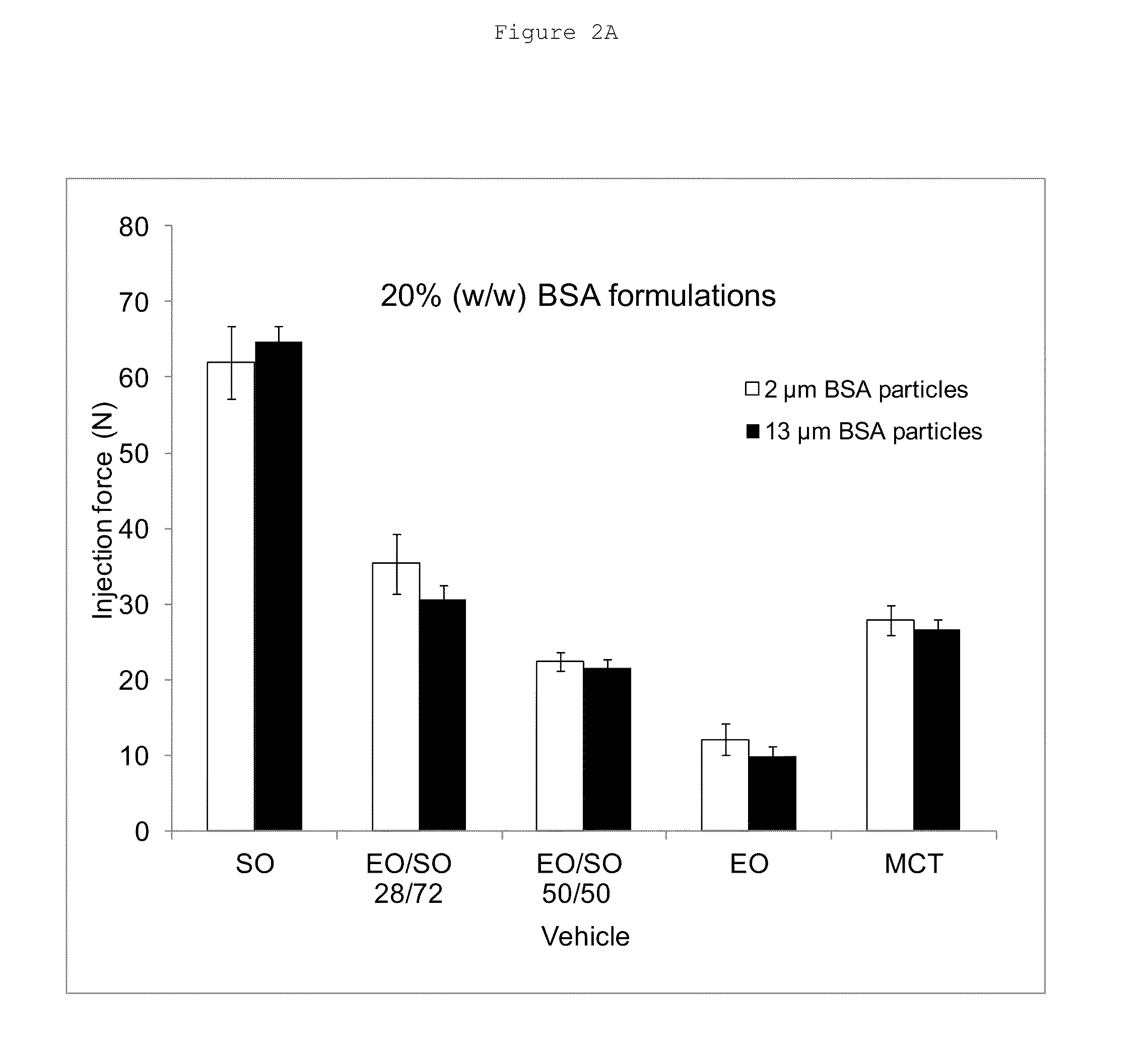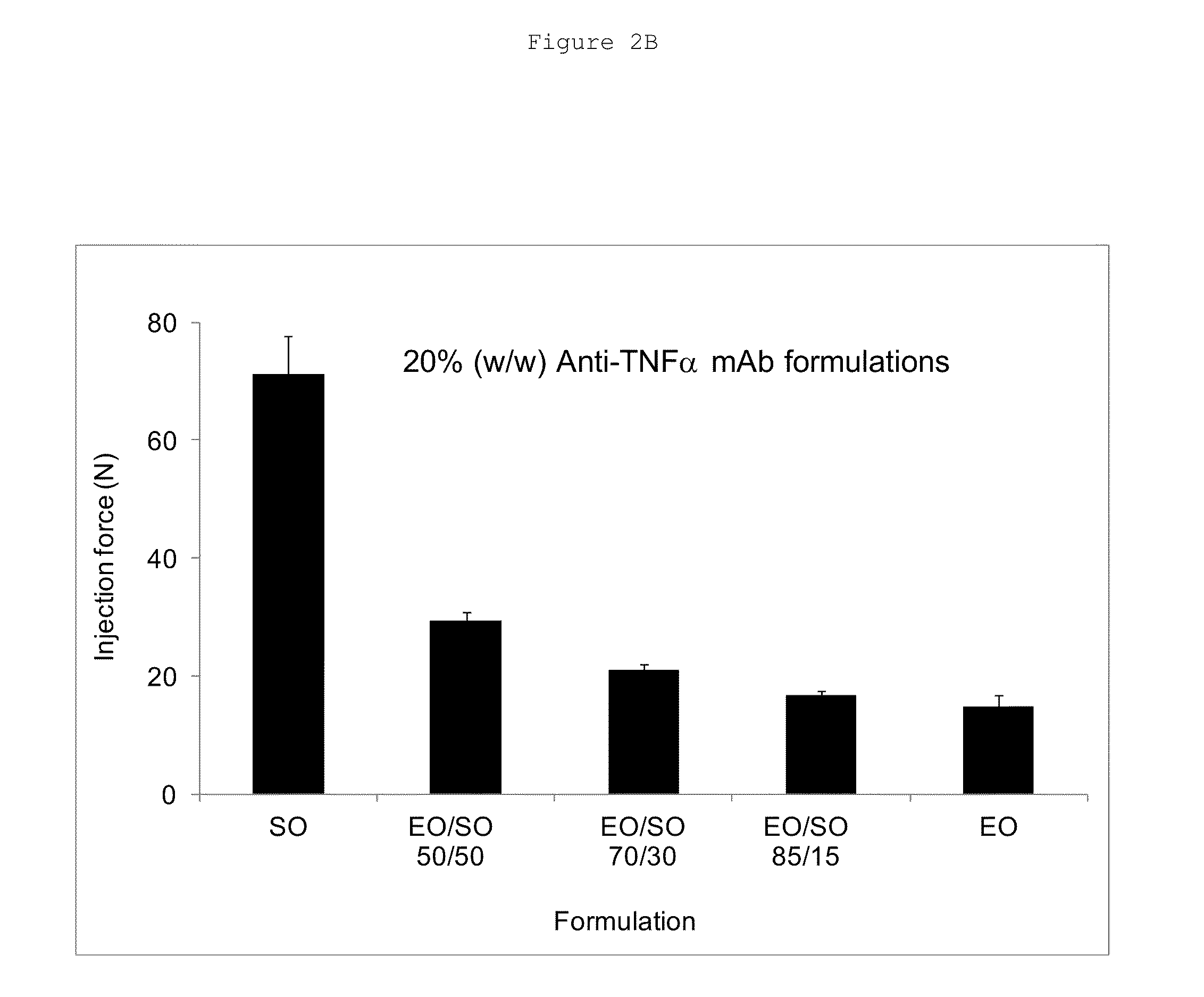Non-Aqueous High Concentration Reduced Viscosity Suspension Formulations
a suspension formulation and high concentration technology, applied in the direction of antibody medical ingredients, peptide/protein ingredients, immunological disorders, etc., can solve the problems of increased protein aggregation, difficult development of injectable formulations, and additional formulation challenges, and achieve the effect of reducing viscosity
- Summary
- Abstract
- Description
- Claims
- Application Information
AI Technical Summary
Benefits of technology
Problems solved by technology
Method used
Image
Examples
example 1
[0061]Screening of Viscosity Reducing Agents for Non-Aqueous Vehicles
[0062]Viscosity reducing agents were added to sesame oil in a concentration of 0.2%-50% by volume. All viscosity reducing agents were of GRAS (Generally Recognized As Safe) material. The mixture was placed in a closed 20 mL scintillation vial and vortexed for 30 seconds, and visually inspected for any immiscibility. Some of the viscosity reducing agents were found not to be miscible with sesame oil and were not screened further. Table 3 shows miscibility of exemplary viscosity reducing agents with sesame oil. Y and N denote that the tested viscosity reducing agent was miscible or was not miscible, respectively, with sesame oil at the concentration tested.
TABLE 3Viscosity reducingViscosity reducing agent % (v / v)agent0.20.71.73.15.49.717.230.050.0DiacetylYYYYYYYNNEthanolYYYYYYNNNEthyl oleateYYYYYYYYYIsopropanolYYYYYYYYN / ALactic acidNNNNNNNNNLinoleic acidYYYYYYYYN / APropionic acidYYYYYYYYN / APropylene glycolNNNNNNNNNTri...
example 2
Preparation of Non-Aqueous High Concentration Low Viscosity Formulations
Preparation of Particles of Bioactive Molecules
Lyophilization:
[0067]Bovine serum albumin (BSA) (Sigma-Aldrich, St. Louis, Mo., USA) and human anti-TNFα monoclonal antibody (mAb) were dissolved in 6.5 mM sodium phosphate buffer, pH 6.0, at a protein concentration of 65 mg / mL. Pharmaceutically acceptable excipients such as sucrose and Tween 80 (or polysorbate 80, PS-80) were optionally added to the protein solution with the concentration of sucrose and Tween 80 in the final solution of 0-9.0% and 0-0.01% (% w / v), respectively. The protein solution was lyophilized using standard protocols.
[0068]The lyophilized protein or mAb powder was further ground in a Waring blender and passed through a series of sieves with determined mesh sizes. The grinding / seizing process produced protein or mAb particles with the particle size of 0.2-250 μm.
[0069]Particles of bovine serum albumin (BSA) (Sigma-Aldrich, St. Loui...
example 3
Stability of Lyophilized Bioactive Molecules in Non-Aqueous Vehicles
[0072]Ethyl oleate (EO) or medium chain triglyceride (MCT; LABRAFAC™ Lipophile WL 1349, Gattefossé, France) was added to sesame oil (SO) in a concentration of 2-50% by volume. The mixture was placed in a closed 20 mL scintillation vial and vortexed for 30 minutes. After a complete mixing, lyophilized anti-TNFα antibody powders were weighed into a 3 mL vacutainer tube, and an adequate amount of vehicle was added to the tube to a final protein content of 10 or 20% (% w / w), which corresponded to 53.6 or 107.2 mg / mL anti-TNFα antibody concentration, respectively.
[0073]The suspension was made homogeneous by brief vortex; the tubes were then sealed. The suspensions were stored at 37° C. After one and four weeks of storage, the samples were extracted.
TABLE 6ProteinVehicleProteincon-CompositionVehicleconcentrationcentration(% v / v)(% w / w)Protein(% w / w)mg / mL*SO (100)60IL-12p40 mAb40216.7EO (100)60TNFα mAb40214.4EO (100)70TNFα...
PUM
| Property | Measurement | Unit |
|---|---|---|
| Temperature | aaaaa | aaaaa |
| Fraction | aaaaa | aaaaa |
| Time | aaaaa | aaaaa |
Abstract
Description
Claims
Application Information
 Login to View More
Login to View More - R&D
- Intellectual Property
- Life Sciences
- Materials
- Tech Scout
- Unparalleled Data Quality
- Higher Quality Content
- 60% Fewer Hallucinations
Browse by: Latest US Patents, China's latest patents, Technical Efficacy Thesaurus, Application Domain, Technology Topic, Popular Technical Reports.
© 2025 PatSnap. All rights reserved.Legal|Privacy policy|Modern Slavery Act Transparency Statement|Sitemap|About US| Contact US: help@patsnap.com



